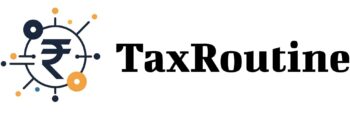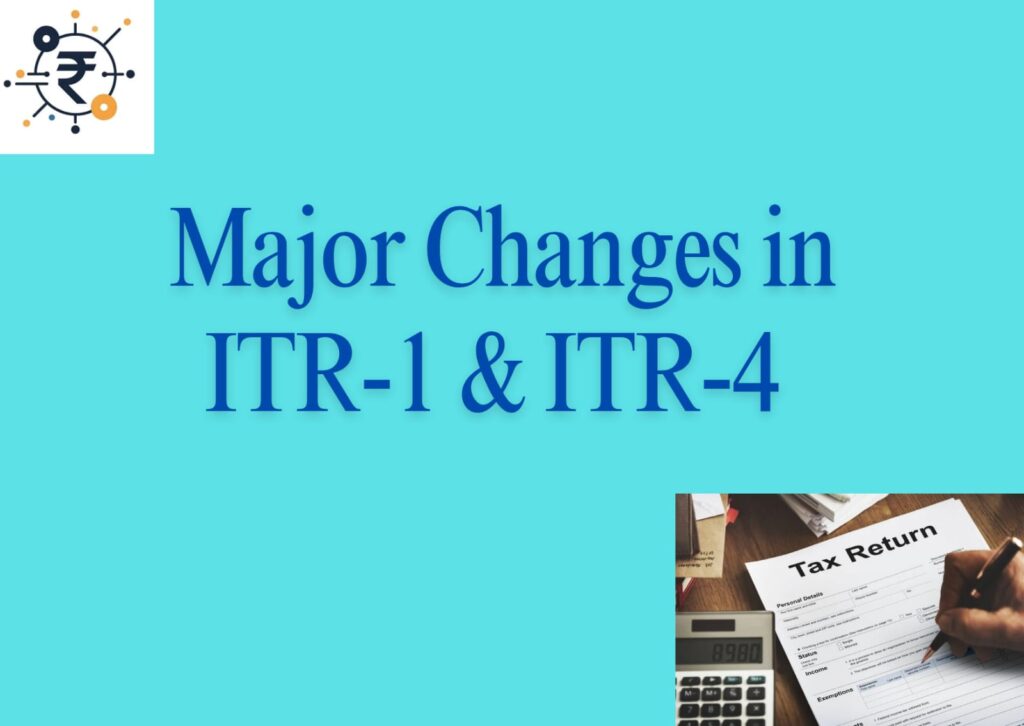The Income Tax Department on 30th May 2025 has released the Excel Based utility for ITR-1 & ITR-4.
Applicability of ITR-1 & ITR-4
ITR-1 is applicable to Individual assessees being a Resident in India (other than not ordinarily resident) and whose income is upto ₹ 50 lakhs.
Persons who are eligible to file ITR-1 is as follows:
- Income from Salary
- Income from House Property (Income from only one property either self-occupied or let out)
- Income from Long Term capital gains under section 112A(upto ₹ 1.25 lakhs)
- Income from Other Sources (such as interest income , dividend etc).
- Agricultural Income upto ₹ 5,000/-
Persons who are not eligible to file ITR-1:
- Person who is a Director in a company.
- Persons who holds or has held unlisted equity shares in a company at any point of time during the previous year.
- Persons for whom TDS have been deducted u/s 194N of the Income Tax Act.
- Persons whose income tax is deferred on ESOP
- Persons who hold foreign assets (including financial interest in an entity) and have income from any source outside India.
- Persons who have signing authority in any account located outside India.
- Persons who have brought forward loss or loss to be carried forward under any head of income
- Persons who have short -term and long-term capital gains (i.e other than long-term capital gain upto the exemption of ₹ 1.25 lakhs).
- Non-Resident Individuals.
ITR-4 (SUGAM) is applicable to Individuals, Firms, HUFs (other than LLP) whose total income is less than ₹ 50 lakhs and persons having business or professional income on presumptive basis (i.e u/s 44AD, 44ADA or 44AE).
Persons who are eligible to file ITR-4 is as follows:
- Income from Salary
- Income from House Property (Income from only one property either self-occupied or let out)
- Income from Business or Profession under presumptive basis (i.e u/s 44AD, 44ADA, 44AE)
- Income from Long Term capital gains under section 112A(upto ₹ 1.25 lakhs)
- Income from Other Sources (such as interest income , dividend etc).
- Agricultural Income upto ₹ 5,000/-
Persons who are not eligible to file ITR-4:
- Person who is a Director in a company.
- Persons who holds or has held unlisted equity shares in a company at any point of time during the previous year.
- Persons for whom TDS have been deducted u/s 194N of the Income Tax Act.
- Persons whose income tax is deferred on ESOP
- Persons who hold foreign assets (including financial interest in an entity) and have income from any source outside India.
- Persons who have signing authority in any account located outside India.
- Persons who have brought forward loss or loss to be carried forward under any head of income
- Persons who have short -term and long-term capital gains (i.e other than long-term capital gain upto the exemption of ₹ 1.25 lakhs).
- Non-Resident Individuals.
Major Changes in ITR-1 & ITR-4
The following changes are made in ITR-1 & ITR-4 are :
- Quoting of Aadhar Number is mandatory in the ITR. Aadhar Enrolment number is being removed to avoid the consequences of non-linking of Aadhar and PAN.
- In schedule 10(13A) the following details are required to be filled to arrive at the eligible amount of Exemption:
- Actual HRA received
- Actual rent paid 10% of (salary+DA)
- 40% or 50% of (salary+DA)
- In Schedule Salary, Nature of Employment cannot be selected as Not Applicable.
- Exempt allowances in Salary should be disclosed in one dropdown.
- Under Exempt Income, Long Term Capital Gains should not exceed ₹ 1.25 lakhs.
- Details of Bank from which loan is being taken needs to be provided for claiming interest on borrowed capital u/s 24(b) [i.e in Income from House Property]
- In case of deduction under section 80C is being claimed in the old regime the details of Identification Number of supporting documents are required to be provided in the schedule.
- To claim deduction under section 80CCD (1) or 80CCD(1B), PRAN (Permanent Retirement Account Number) must be provided in the Schedule.
- To claim deduction under section 80E, 80EE, 80EEA, 80EEB ” Details of Bank from which loan is taken” is required to be mentioned in the schedule such as the following:
- Loan Taken from – Whether Bank or Institution
- Name of the Bank or Institution
- Account Number of the Loan
- Date of Loan
- Total Loan amount taken
- Loan outstanding amount
- To claim deduction under section 80D, the amount of premium paid is to be mentioned in the schedule which should match with the health insurance premium entered by the Health Insurance such as the following:
- Insurer Name
- Policy Number
- Health Insurance Amount
- To claim deduction under section 80U and 80DD, form 10IA filed for autism, cerebral palsy, multiple disabilities needs to be filed separately in the schedule. The following details are required to be provided:
- Nature of Disability
- Type of Disability
- Deduction Amount
- Dependent Type (only in case of 80DD)
- To claim deduction under section 80DDB, details of specified disease is required to be provided in the schedule.
- Select from the description – whether Self or dependent or Self or Dependent – Senior Citizen
- From the dropdown select the type of disease such as :
- Dementia ;
- Dystonia Musculorum Deformans;
- Motor Neuron Disease;
- Ataxia;
- Chorea;
- Hemiballismus;
- Aphasia;
- Parkinsons Disease;
- Malignant Cancers;
- Full Blown Acquired Immuno-Deficiency Syndrome (AIDS);
- Chronic Renal failure;
- Hematological disorders;
- Hemophilia;
- Thalassaemia
- To claim deduction under section 80GG, Acknowledgement number of form 10BA is required to be mentioned in the schedule.
🔗 Suggested Posts:
Who is Required to File an Income Tax Return in India?
Your Guide to the ITR Forms 1–7 for AY 2025–26: Key Changes to Know
E-Filing of ITR 1 & 4 for AY 2025-26 enabled


